-
 Bitcoin
Bitcoin $117000
-0.23% -
 Ethereum
Ethereum $3743
-0.48% -
 XRP
XRP $3.067
-1.46% -
 Tether USDt
Tether USDt $0.0000
0.03% -
 BNB
BNB $783.6
-2.36% -
 Solana
Solana $175.0
-2.85% -
 USDC
USDC $0.0000
0.02% -
 Dogecoin
Dogecoin $0.2157
-2.54% -
 TRON
TRON $0.3274
-2.34% -
 Cardano
Cardano $0.7535
-2.95% -
 Hyperliquid
Hyperliquid $41.86
-2.29% -
 Sui
Sui $3.729
-2.04% -
 Stellar
Stellar $0.4035
-2.99% -
 Chainlink
Chainlink $17.39
-1.94% -
 Bitcoin Cash
Bitcoin Cash $565.4
0.35% -
 Hedera
Hedera $0.2519
-3.11% -
 Avalanche
Avalanche $23.03
-4.88% -
 Litecoin
Litecoin $108.6
0.66% -
 UNUS SED LEO
UNUS SED LEO $8.952
-0.03% -
 Toncoin
Toncoin $3.345
-0.06% -
 Ethena USDe
Ethena USDe $1.001
0.06% -
 Shiba Inu
Shiba Inu $0.00001265
-2.51% -
 Uniswap
Uniswap $9.800
-4.15% -
 Polkadot
Polkadot $3.741
-3.23% -
 Monero
Monero $308.8
-2.04% -
 Dai
Dai $1.000
0.03% -
 Bitget Token
Bitget Token $4.493
0.20% -
 Pepe
Pepe $0.00001114
-2.22% -
 Cronos
Cronos $0.1415
-1.62% -
 Aave
Aave $269.9
-4.21%
How to avoid false signals with the EMA indicator in crypto?
The EMA is a responsive crypto trading tool that highlights trends by prioritizing recent prices, but combining it with RSI, MACD, volume, and price action helps filter false signals and improve decision accuracy.
Jul 30, 2025 at 01:21 pm
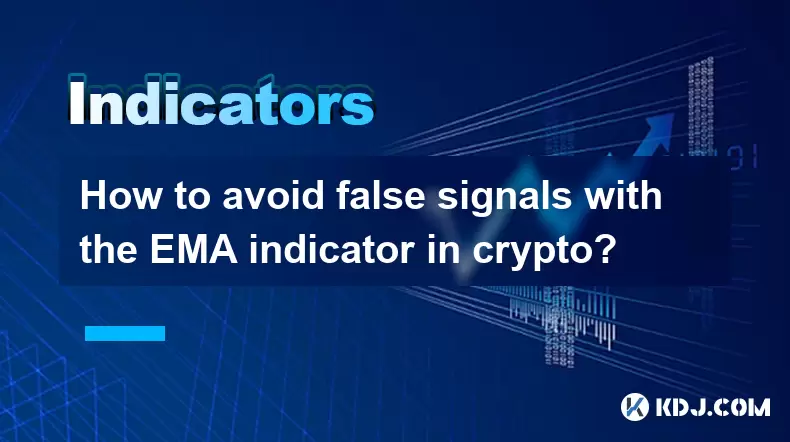
Understanding the EMA Indicator in Cryptocurrency Trading
The Exponential Moving Average (EMA) is a widely used technical analysis tool in the cryptocurrency market due to its responsiveness to recent price changes. Unlike the Simple Moving Average (SMA), which treats all data points equally, the EMA assigns greater weight to the most recent prices, making it more sensitive to new information. This characteristic makes it particularly useful in the volatile crypto environment. However, this sensitivity can also lead to false signals, where the indicator suggests a trend change that does not materialize. Traders must understand how the EMA works before attempting to filter out misleading signals.
In crypto trading, the EMA is often used to identify trend direction, support and resistance levels, and potential entry or exit points. Common periods used include the 9-day, 20-day, and 50-day EMAs. When the price crosses above the EMA, it may signal a bullish trend; a cross below could indicate bearish momentum. But in highly volatile markets like Bitcoin or Ethereum, such crossovers can occur frequently and misleadingly due to short-term price spikes.
Combining EMA with Other Indicators to Reduce Noise
Relying solely on the EMA can increase the risk of acting on false signals. To improve accuracy, traders often combine the EMA with other technical indicators. One effective method is pairing the EMA with the Relative Strength Index (RSI). The RSI measures the speed and change of price movements and helps identify overbought or oversold conditions. For example, if the price crosses above the 20-day EMA but the RSI is above 70, the bullish crossover might be less reliable due to overbought conditions.
Another powerful combination is using the EMA with the Moving Average Convergence Divergence (MACD). The MACD uses EMAs of different lengths to detect momentum shifts. A bullish EMA crossover confirmed by a rising MACD line above the signal line increases the probability of a genuine trend. Similarly, volume indicators can validate EMA signals. A breakout above the EMA accompanied by high trading volume is more trustworthy than one with low volume.
- Use the RSI to check for overbought (>70) or oversold (<30) conditions before acting on EMA crossovers
- Confirm EMA signals with MACD histogram turning positive or negative
- Analyze on-chain volume data or exchange trading volume to ensure momentum supports the EMA signal
Using Multiple EMA Timeframes for Confirmation
One of the most effective ways to avoid false signals is to apply multiple EMA timeframes simultaneously. A common strategy is the EMA crossover system, where two EMAs of different periods are plotted together. For instance, the 9-day EMA crossing above the 21-day EMA is considered a bullish signal, while a cross below suggests bearish momentum. However, this dual-EMA approach reduces noise because both averages must align.
Traders can further refine this by incorporating a third EMA, such as the 50-day or 200-day EMA, to determine the broader trend. If the price is above the 200-day EMA, the long-term trend is bullish, and traders might only take long positions when the 9-day EMA crosses above the 21-day EMA. This layered approach filters out counter-trend signals that often result in losses.
- Monitor the 9-day and 21-day EMA crossover for short-term momentum shifts
- Ensure the 50-day EMA is trending in the same direction as the trade for added confirmation
- Avoid trading against the 200-day EMA unless strong reversal patterns appear with volume support
Adjusting EMA Periods Based on Market Volatility
Cryptocurrency markets experience varying levels of volatility. During high volatility—such as during major news events or halving cycles—shorter EMA periods may generate excessive false signals. Traders can adapt by increasing the EMA period to smooth out price noise. For example, switching from a 9-day to a 14-day EMA during turbulent periods reduces sensitivity and minimizes whipsaws.
Conversely, in stable or trending markets, shorter EMAs like the 5-day or 7-day can provide timely entries. The key is dynamic adjustment based on current market conditions. Tools like the Average True Range (ATR) can help assess volatility levels. A rising ATR suggests increased volatility, prompting traders to use longer EMAs to avoid false breakouts.
- Increase EMA length (e.g., from 9 to 14) when ATR values rise
- Use shorter EMAs (5–9 periods) in low-volatility consolidation phases
- Re-evaluate EMA settings weekly based on price action and volatility trends
Filtering Signals with Price Action and Candlestick Patterns
Even with multiple EMAs and confirmatory indicators, price action remains a critical filter. A simple EMA crossover might suggest a buy signal, but if it occurs during a doji candle or a long wick rejection, the signal could be weak. Traders should look for strong bullish candles (e.g., green marubozu or engulfing patterns) that close decisively above the EMA to confirm strength.
Support and resistance levels derived from previous price swings also enhance EMA signal reliability. For instance, an EMA crossover near a key psychological level (like $30,000 for Bitcoin) carries more weight. Similarly, if the EMA aligns with a horizontal support zone, the bounce off that area gains credibility.
- Wait for candle close above EMA before entering long positions
- Look for bullish engulfing or hammer patterns near EMA support
- Avoid signals that occur in congestion zones without clear breakout confirmation
Setting Stop-Loss and Position Sizing to Manage Risk
Even with careful signal filtering, false signals cannot be eliminated entirely. Therefore, risk management is essential. Setting a stop-loss below the recent swing low (for long trades) or above the swing high (for short trades) protects capital when a signal fails. Position sizing should reflect the confidence level in the EMA signal—larger positions only when multiple confirmations align.
Using trailing stops based on the EMA itself can also help. For example, a trader might exit a long position when the price closes below the 21-day EMA. This dynamic exit adapts to the trend and avoids premature exits during minor pullbacks.
- Place stop-loss orders based on recent price structure, not arbitrary percentages
- Scale into positions when multiple confirmations (volume, RSI, MACD) align
- Use trailing stop set at the EMA level to lock in profits during strong trends
Frequently Asked Questions
What is the best EMA period for day trading crypto?
The 9-day and 21-day EMAs are commonly used for day trading due to their responsiveness. Shorter periods like 5 or 7 can also work in fast-moving markets, but they require additional confirmation from volume or RSI to reduce false entries.
Can EMA be used in sideways crypto markets?
EMA performs poorly in sideways markets because it generates frequent crossovers without sustained trends. Traders should use Bollinger Bands or ADX to identify ranging conditions and avoid EMA-based trades during such phases.
How do I know if an EMA crossover is a false signal?
A crossover is likely false if it lacks volume support, occurs near strong resistance, or contradicts higher timeframe trends. If the price quickly reverses back across the EMA within a few candles, it’s a sign of weakness.
Should I use EMA on higher timeframes like daily or weekly charts?
Yes. The daily and weekly EMAs provide stronger trend context. A 50-day EMA on the daily chart can act as a filter—only taking signals on lower timeframes that align with the higher timeframe EMA direction.
Disclaimer:info@kdj.com
The information provided is not trading advice. kdj.com does not assume any responsibility for any investments made based on the information provided in this article. Cryptocurrencies are highly volatile and it is highly recommended that you invest with caution after thorough research!
If you believe that the content used on this website infringes your copyright, please contact us immediately (info@kdj.com) and we will delete it promptly.
- LYNO Token Presale: AI Arbitrage Revolution in DeFi
- 2025-07-31 05:11:11
- Pepecoin Successors: Can These Cryptocurrencies Make You a Millionaire?
- 2025-07-31 05:50:12
- AML Bitcoin Fraud: Cracking Down on Crypto Crime in the Big Apple and Beyond
- 2025-07-31 04:33:53
- Cardano (ADA) in 2025: Navigating Crypto's Future
- 2025-07-31 03:52:07
- Solana Meme Coin Price Prediction: Will the Frog Outleap the Dog?
- 2025-07-31 03:52:07
- Bitcoin's Bullish Outlook: CryptoQuant's Insights on Futures Market Cooling
- 2025-07-31 03:59:10
Related knowledge

How does the VWAP line help in identifying overbought and oversold market conditions?
Jul 31,2025 at 05:19am
Understanding the VWAP Line and Its Role in Technical AnalysisThe Volume Weighted Average Price (VWAP) is a critical tool used by traders within the c...
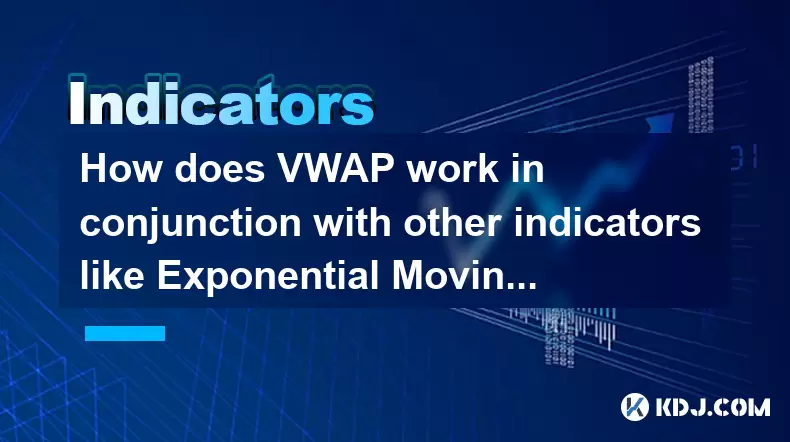
How does VWAP work in conjunction with other indicators like Exponential Moving Averages (EMAs)?
Jul 31,2025 at 04:38am
Understanding VWAP and Its Role in Crypto TradingThe Volume Weighted Average Price (VWAP) is a critical analytical tool in cryptocurrency trading, par...

What exactly does the VWAP indicator measure?
Jul 31,2025 at 03:26am
Understanding the Core Concept of VWAPThe VWAP (Volume Weighted Average Price) indicator measures the average price of a financial asset, weighted by ...
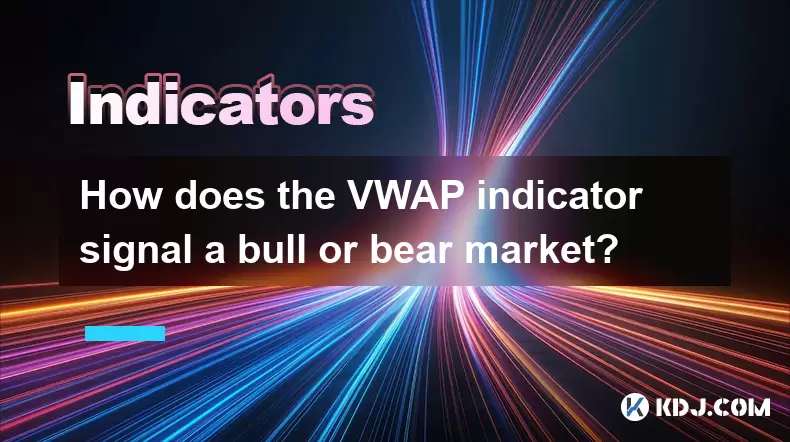
How does the VWAP indicator signal a bull or bear market?
Jul 31,2025 at 02:57am
Understanding the VWAP Indicator in Cryptocurrency TradingThe Volume Weighted Average Price (VWAP) is a widely used technical analysis tool in cryptoc...
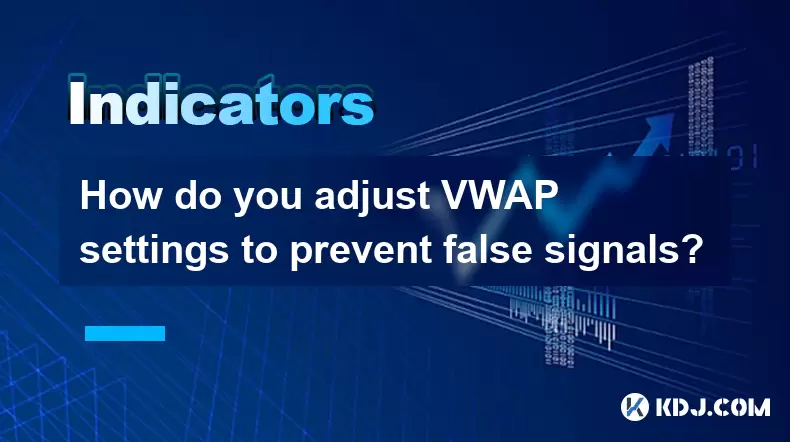
How do you adjust VWAP settings to prevent false signals?
Jul 31,2025 at 04:15am
Understanding VWAP and Its Role in Cryptocurrency TradingThe Volume Weighted Average Price (VWAP) is a widely used technical indicator in the cryptocu...
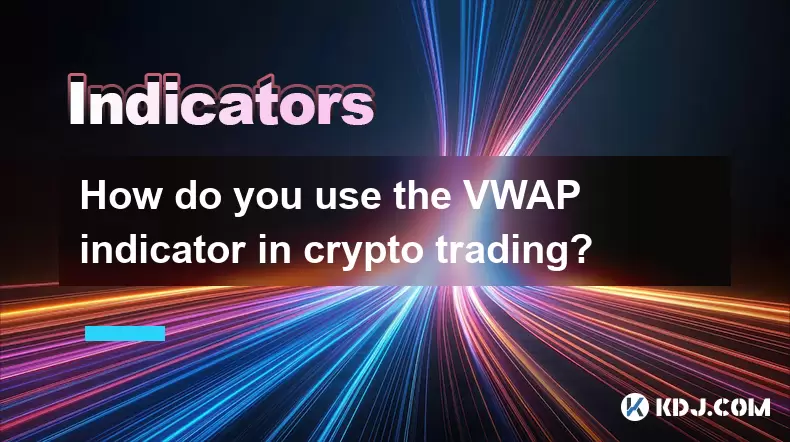
How do you use the VWAP indicator in crypto trading?
Jul 31,2025 at 01:44am
Understanding the VWAP Indicator in Cryptocurrency MarketsThe Volume Weighted Average Price (VWAP) is a powerful analytical tool used extensively in c...

How does the VWAP line help in identifying overbought and oversold market conditions?
Jul 31,2025 at 05:19am
Understanding the VWAP Line and Its Role in Technical AnalysisThe Volume Weighted Average Price (VWAP) is a critical tool used by traders within the c...

How does VWAP work in conjunction with other indicators like Exponential Moving Averages (EMAs)?
Jul 31,2025 at 04:38am
Understanding VWAP and Its Role in Crypto TradingThe Volume Weighted Average Price (VWAP) is a critical analytical tool in cryptocurrency trading, par...

What exactly does the VWAP indicator measure?
Jul 31,2025 at 03:26am
Understanding the Core Concept of VWAPThe VWAP (Volume Weighted Average Price) indicator measures the average price of a financial asset, weighted by ...

How does the VWAP indicator signal a bull or bear market?
Jul 31,2025 at 02:57am
Understanding the VWAP Indicator in Cryptocurrency TradingThe Volume Weighted Average Price (VWAP) is a widely used technical analysis tool in cryptoc...

How do you adjust VWAP settings to prevent false signals?
Jul 31,2025 at 04:15am
Understanding VWAP and Its Role in Cryptocurrency TradingThe Volume Weighted Average Price (VWAP) is a widely used technical indicator in the cryptocu...

How do you use the VWAP indicator in crypto trading?
Jul 31,2025 at 01:44am
Understanding the VWAP Indicator in Cryptocurrency MarketsThe Volume Weighted Average Price (VWAP) is a powerful analytical tool used extensively in c...
See all articles

























































































